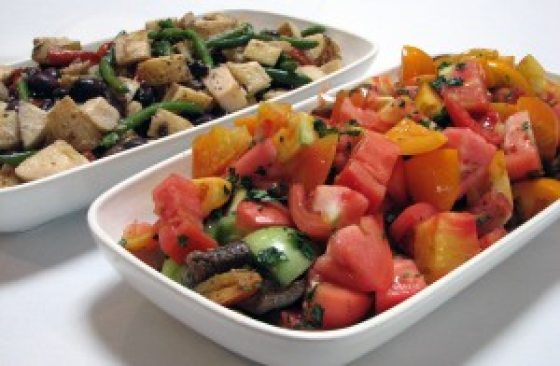
During Longwood’s two-year Professional Gardener Training Program, the students choose a country to travel to for a 10-day study abroad experience. Each Professional Gardener (PG) class is responsible for raising about half of the trip cost through plant sales, weekend work at local gardens who donate money, and whatever creative ideas we may think of!
This year, the students came up with a new idea—sell fresh, locally grown produce to Longwood’s Terrace Restaurant. After meeting with the Terrace Restaurant Head Chef, the Restaurant Manager, and the Senior Gardener for the Idea Garden (Longwood’s Idea Garden has been providing produce to the Restaurant for several years), everyone decided that the goal was to produce high-quality and fresh, locally grown vegetables, using low-input/organic methods.
The Restaurant’s Head Chef put together a list of crops that are needed to support the seasonal menu, and then the students decided which vegetables they would be able to grow most efficiently. From there, students selected several reliable cultivars of each vegetable in order to have the widest possible variety. The crops include: different varieties of tomatoes, eggplant, summer squash, winter squash, beans, Swiss chard, kale and others. In addition, the students are growing a few different herbs commonly used at the Restaurant such as Russian tarragon, parsley, cilantro, and purple and green basil.


Many of the long season crops were started in the student greenhouse, located on Red Lion Row (known fondly by the students as “The Row”). The Row is also home to several fallow fields that we cultivated and used for planting the transplants around mid-May, after the frost-free date. About three fields were designated to the vegetable project, each about 50’ x 50’.
Some of the early season crops such as carrots and peas were harvested in May and June, while the others did not produce much until mid to late June. Since then, we have been harvesting several pounds of beans, squash, tomatoes and cucumbers every few days. The chefs always say,” Whatever you bring us, we will use!” This experience has been a wonderful educational opportunity for the PG students, and we learned several lessons that we will pass along to future classes: focus on a few different, major, indeterminate producing crops, and carefully consider the time and labor required to operate a vegetable garden on such a large scale!


Not only will this project raise money for class trips (such as our trip to Spain this past June), and provide students with experience growing high-quality, low-input produce, but our guests benefit as well! We hope that our visitors can learn about our gardener training programs while enjoying fresh, delicious menu items in the Terrace Restaurant. The PG students are excited to continue harvesting vegetables for the Restaurant for the remainder of the season!


